The Flatesbury Stone in 3D
Text and Model by Seán Sourke
Overview
‘Flatesbury Monument’ Graveslab (National Monument KD019-014003-)
Located in the ruined medieval parish church of Johnstown, just outside Naas in Co. Kildare, is a late medieval limestone graveslab carved in low relief. Writing in his Diocese of Kildare and Leighlin, in the late 19th century, the Rev. Comerford describes this stone as then being in the centre of the church and part of ‘an ancient box-tomb’ (VOL II, pp 176-177). It has since been relocated and mounted in a vertical orientation within a recess of the church’s north wall.
The graveslab’s design is typical of the 15th-16th century period. At the bottom of the stone is a motif known as a Stepped Calvary, forming a base from which a long shaft extends up the centre of the stone to form the verticals of an eight-pointed cross. The latter has three fleur-de-lys and three single leaf motifs terminating its arms.
The graveslab also contains the heraldic coat-of-arms of the Wogan family (left) carved within a lozenge figure (indicating the arms represent a female) and the coat-of-arms of the Flatesbury family (right), who had a long association with the county dating back to at least 1286, when their earliest reference appears in the surviving records.
NOTE: This model requires good bandwidth and a reasonably powerful computer to view successfully, as the download size is 309MB. Alternatively, you can view images with annotations in the section below the model.
Annotations on the Model
1. Flatesbury Stone – Late Medieval Grave Slab
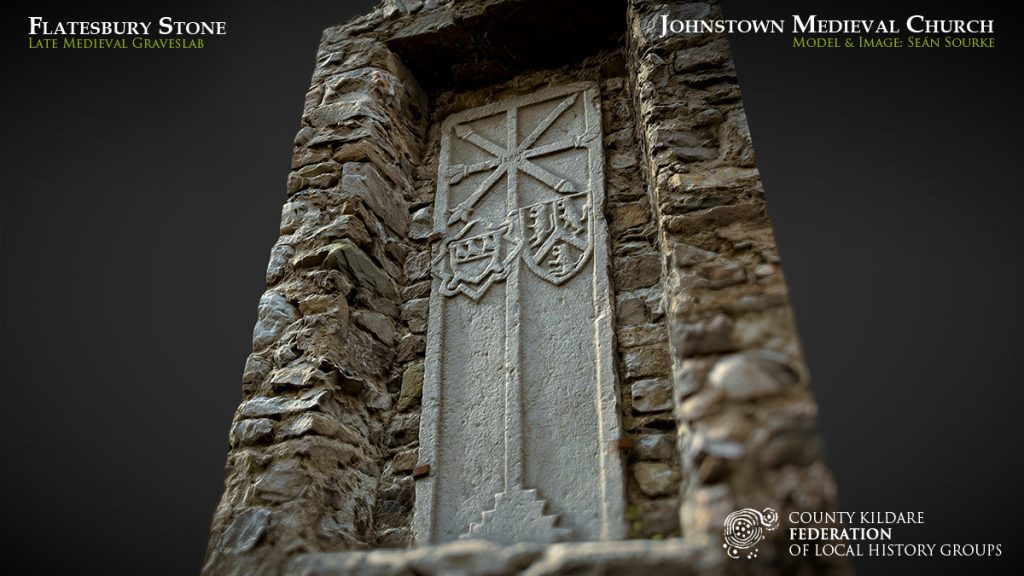
This limestone graveslab in Johnstown’s medieval church is decorated in low relief with a carved example of an eight-armed cross, a common motif found on graveslabs from the 15th and 16th centuries. It also contains two familial coat-of-arms.
The graveslab is now mounted in an upright position in a wall niche of the ruined medieval parish church but was recorded as being located in the centre of the church during the late 19th century.
The graveslab’s original orientation would have been recumbent and a slight taper running along its length – narrowing towards the bottom – may indicate that it was laid over a grave without side panels and not originally part of an ‘ancient box-tomb’, as stated by the Rev. Comerford’s in his 1883 Diocese of Kildare and Leighlin.
2. Eight-pointed Cross
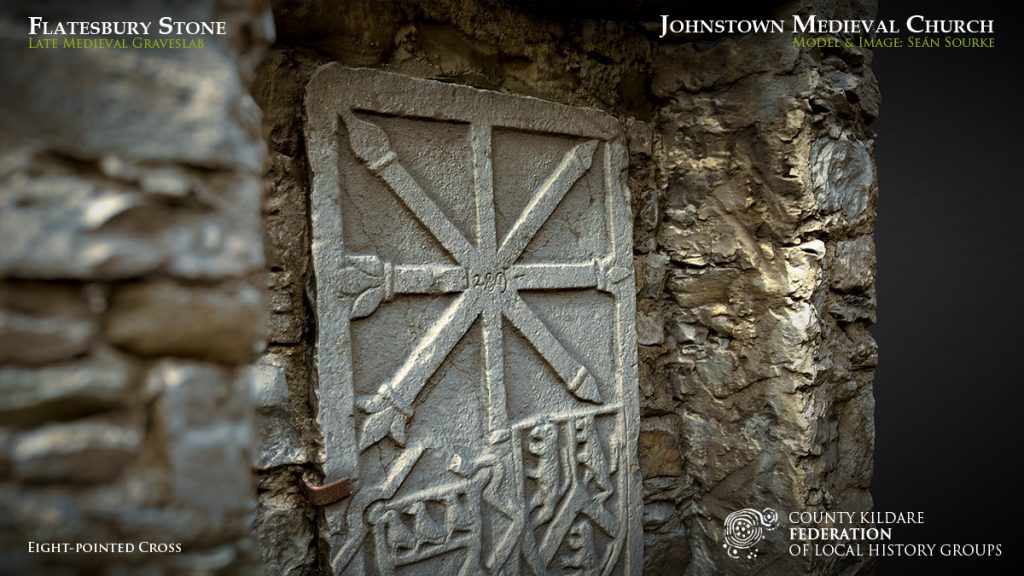
The most striking feature of the graveslab is an eight-pointed cross with three fleur-de-lys and three single leaf terminals created by low relief carving.
The date ‘1289’, is incised into the centre of the cross. It is executed in a style of lettering current during the 18th and 19th centuries. Such a date is also anachronistic to the date range possible for this monument based on the style of the design and the decorative motifs used. Therefore, the date can have little relevance to the monument or the people it was carved to commemorate and should be disregarded from this perspective. It seems probable that it was added to the monument by an early antiquarian who possibly misrepresented the date ‘1286’ – the earliest surviving reference to a Flatesbury in the Irish records. It is, from this perspective, part of the graveslab’s long history.
3. Wogan Coat-of-Arms (Female)
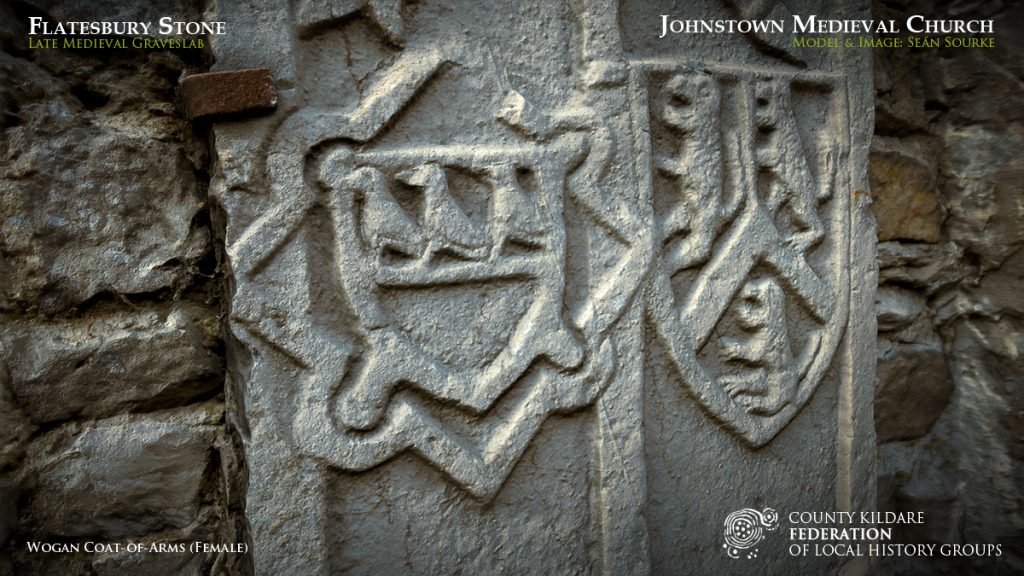
The Wogan coat-of-arms (left) is contained within a decorative lozenge shape, which is a heraldic device to denote that it represents a female (see: Vicars, JCKAS, Vol. IV No.2).
4. Flatesbury Coat-of-Arms
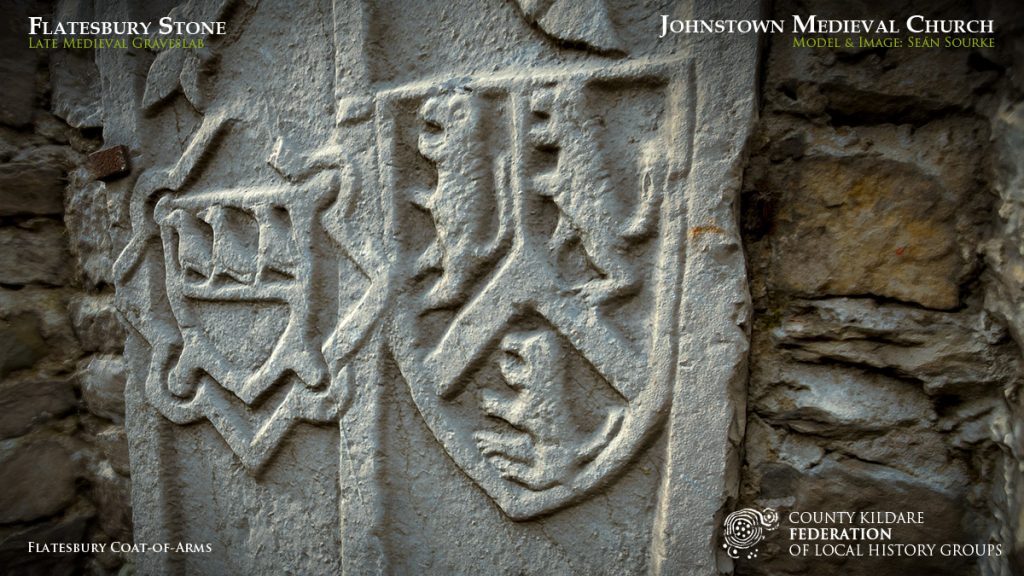
The surname is variously spelt in the historic records as de Flatebry, (de) Flatesbury, Flattesbury, Flattisbury, Flatisburie, and Flatsbury.
The family were associated with the village of Johnstown from the late 14th century onwards.
There were two marriages, identified by Vicars, between a male Flatesbury and a female Wogan (see: Vicars, JCKAS, Vol. IV No.2).
5. Marriage 1
A James Flatesbury, who, in 1427 was described as being of Osberstown, Yagoeston, Palmerston, and Johnstown, near ‘the Naas’, married an Elenor Wogan.
She was widowed by 1436.
6. Marriage 2
The second marriage was between Phillip Flattisbury, and Elizabeth Wogan (d. 1521) of Rathcoffey.
Phillip was clerk of the exchequer and compiled for the 8th Earl of Kildare, The Red Book of the Earls of Kildare (1503), and for the 9th Earl, the Diversos Chronicas (1517) – an appended Irish history taken from various sources; and also the Kildare Rental Book of 1518.
7. Phillip Flattesbury
Phillip Flattesbury (his own spelling), wrote the following dedication to his Diversos Chronicas :
Here follows divers Chronicles, written at the instance of the Nobel and Magnanimous Lord, Girald FitzGeralde, Lord Deputy of Ireland, by Phillip Flattesbury, of Johnston, near the Naas, Anno Domini 1517 …
8. Stepped Calvary
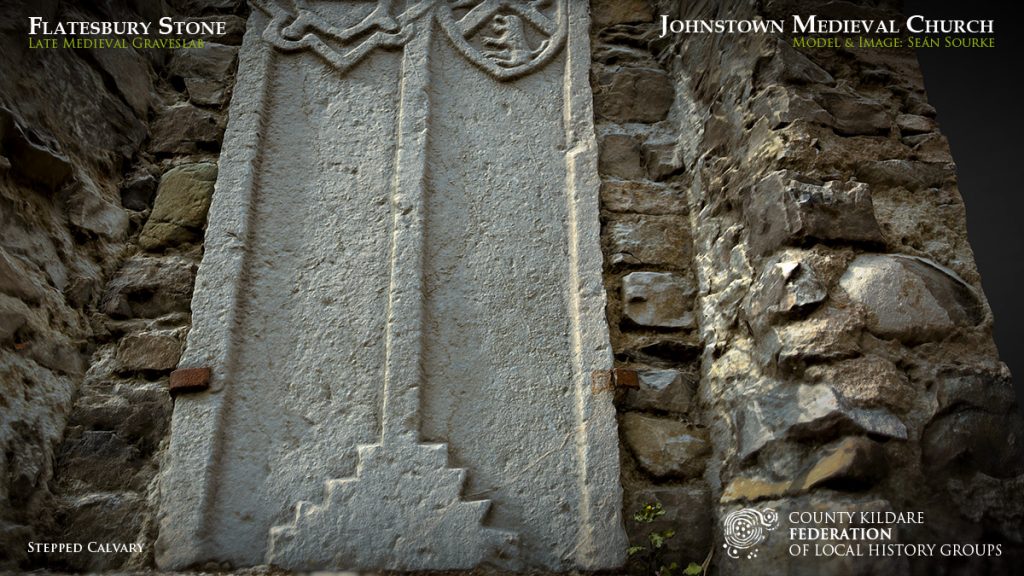
This stepped base motif was a common device on graveslabs during the period in question and is know as a Stepped Calvary.
9. Condition
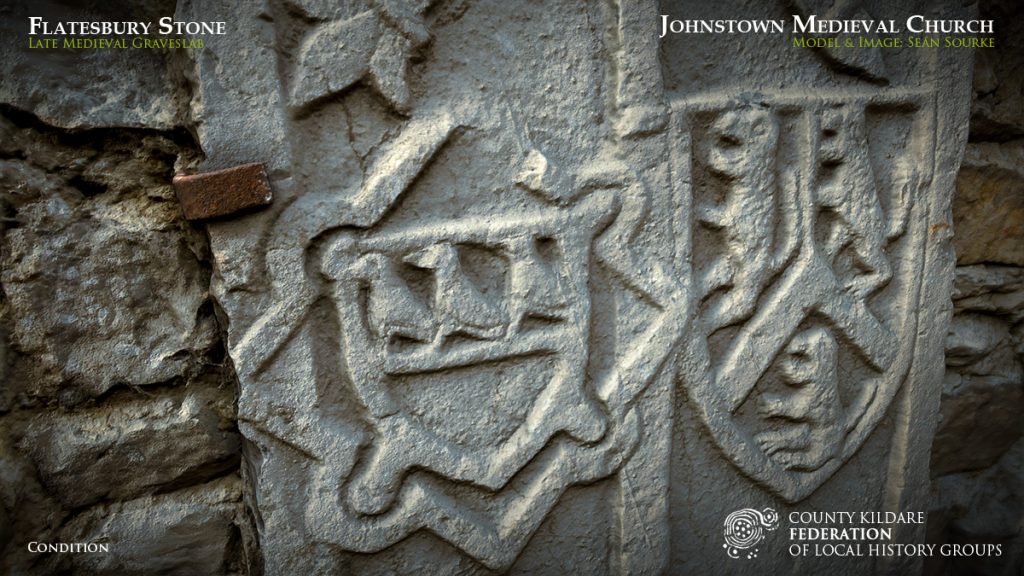
Considering the age of the graveslab and the fact that it was exposed to the elements for centuries, its condition can be described as reasonably good as it retains much of its original detail.
Unfortunately, recent years have seen some deliberate vandalism on the monument including fire damage. This has caused a certain level of cracking and chipping damage to the monument’s surface.
The data to create this model was captured in June 2022, not long after conservation work (lime repointing) was carried out on the medieval church. The stone appeared to have had a coating applied to its surface at the time of capture (similar in appearance to a lime wash of some kind) that had altered the original limestone blue colour to a bright grey that is noticeable on the model.
10. Further Reading
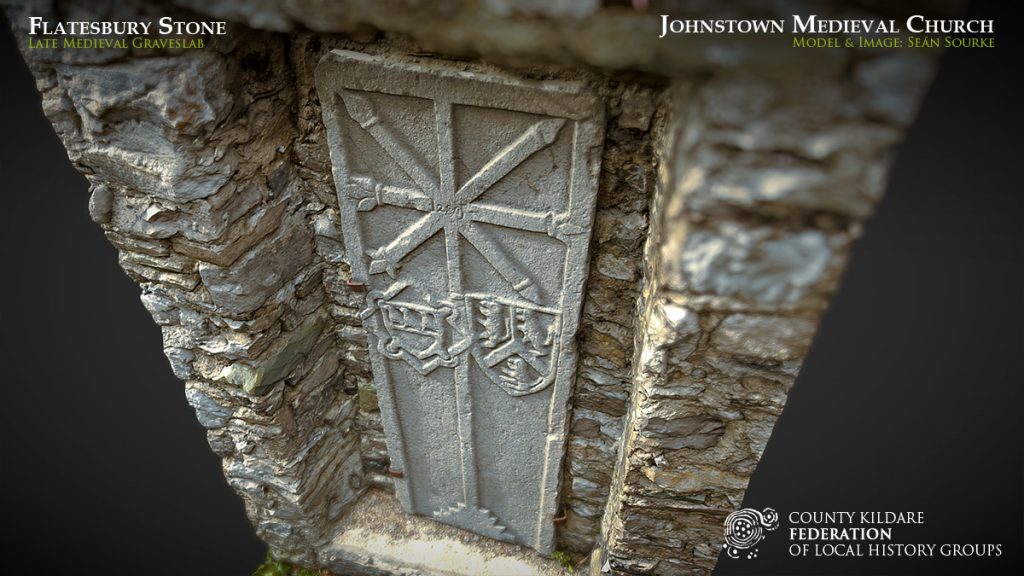
Rev. M. Comerford, Diocese of Kildare and Leighlin, VOL II, pp 176-177
Journal of the County Kildare Archaeological Society
Following articles and issues:
- Brian Mc Cabe, The Johnstown Fragment, Vol. 18 No. 2, 1994-95. pp. 129-133
- Sir Arthur Vicars, Ulster King of Arms – The family of Flatesbury, of Ballynasculloge and Johnstown, Co. Kildare (A paper presented to KAS 25th September 1901), Journal of the County Kildare Archaeological Society, Vol. IV No. 2, 1903. pp87-94
